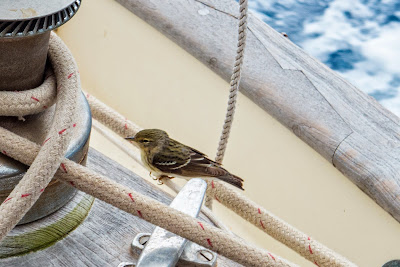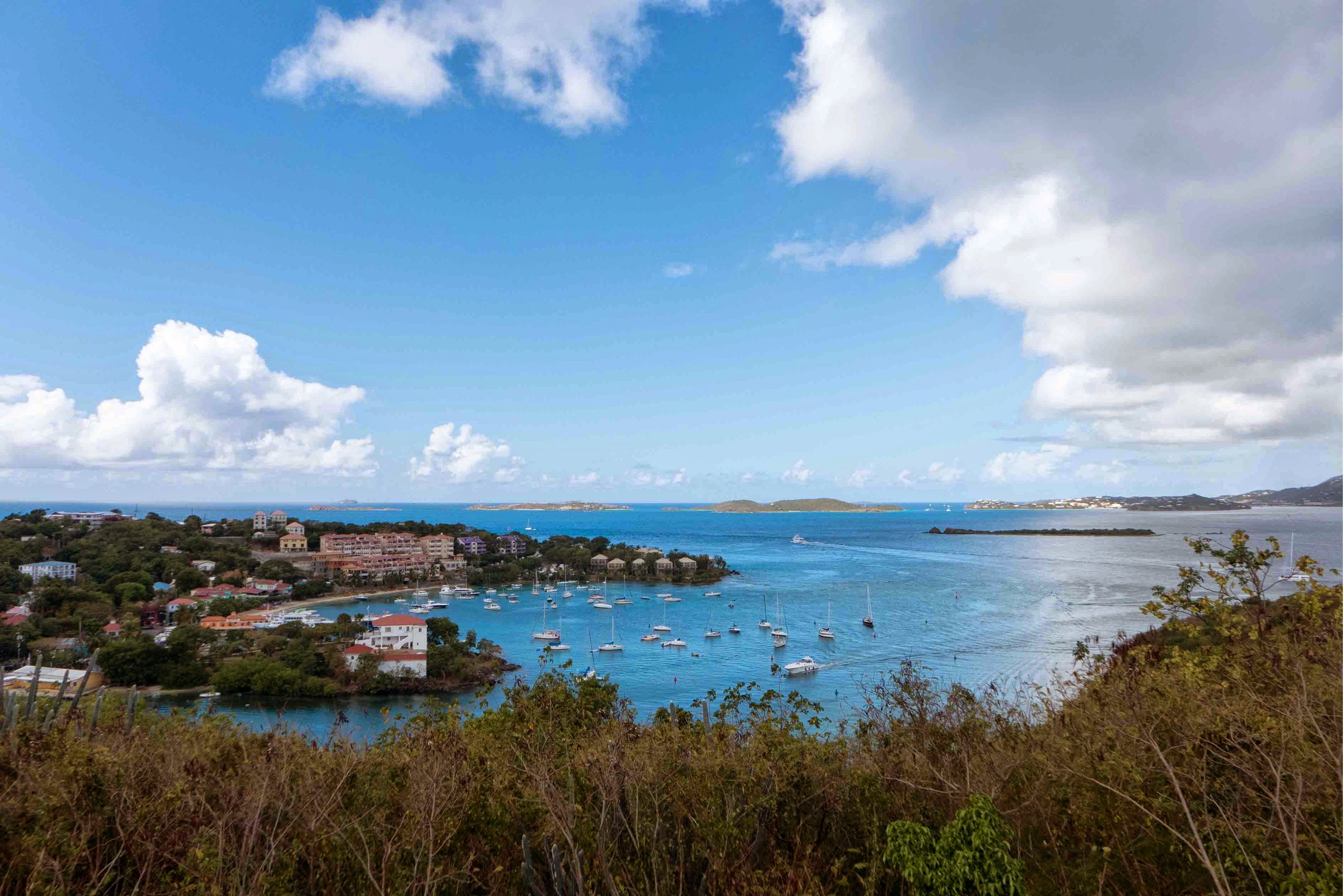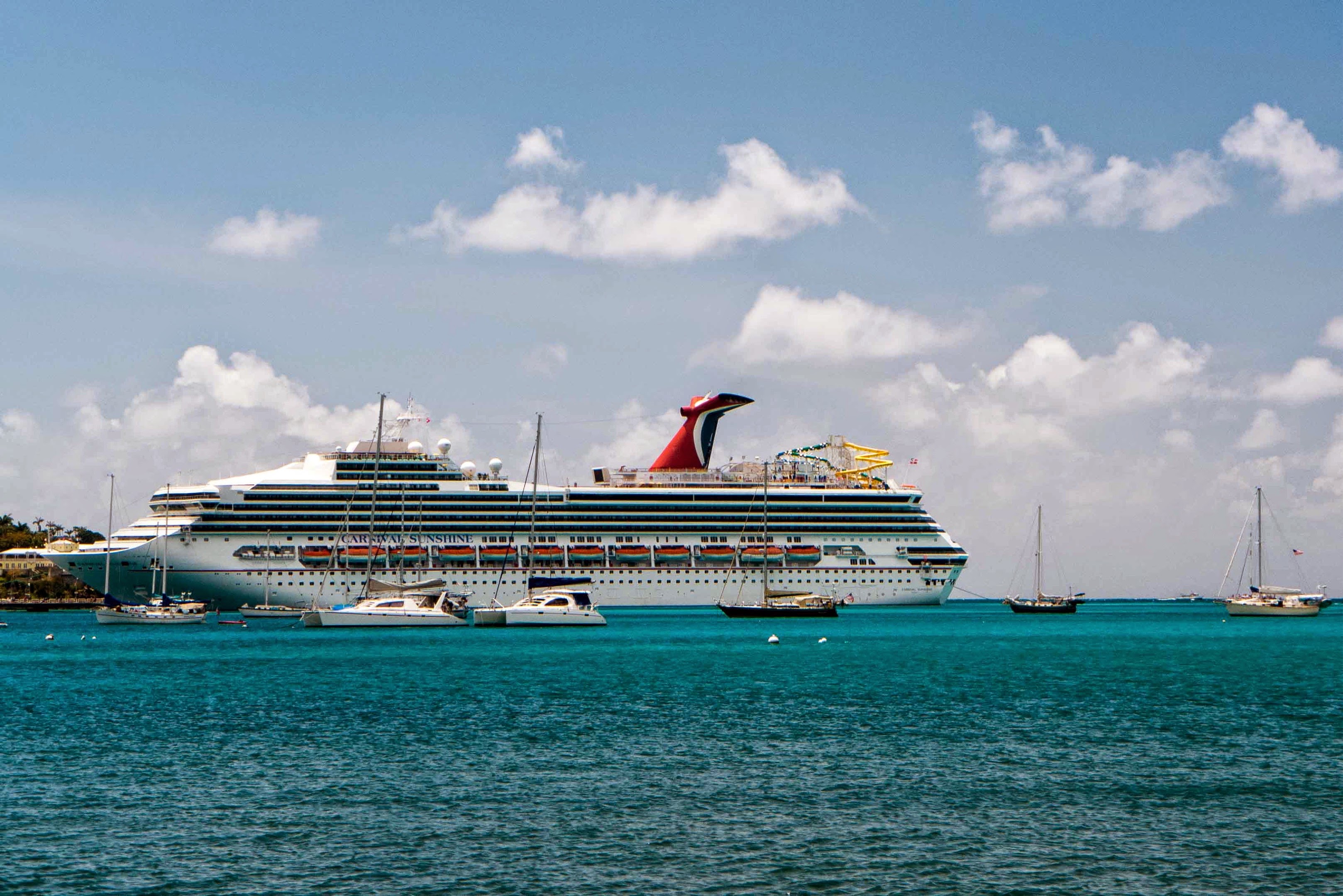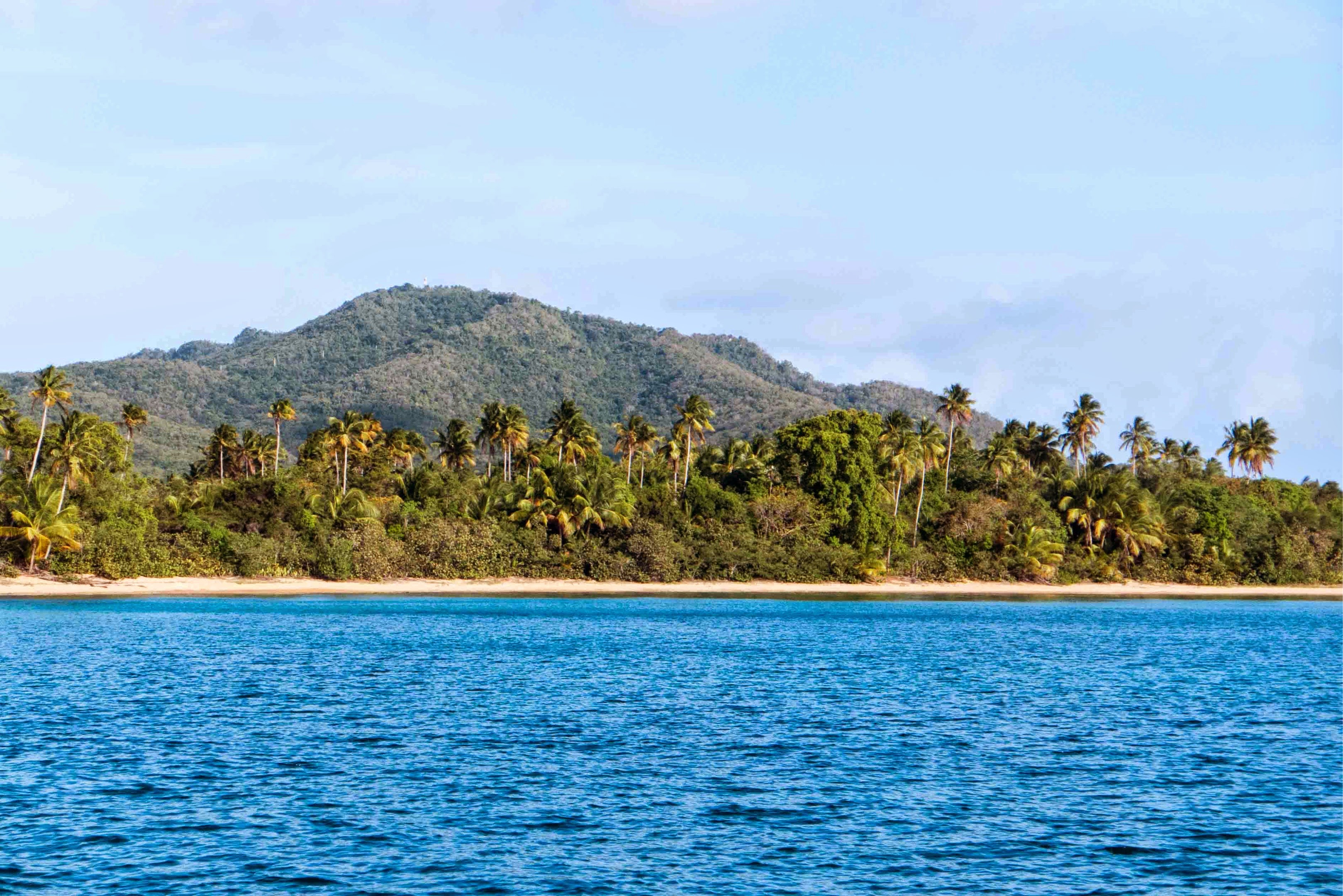Anguilla
February 20, 2014
 |
| Work in progress? Or not... |
Today we did something that we haven't done in years. We went sailing for the pure joy of feeling the warm salt spray tickle our cheeks as we sliced through the clear indigo water of the Caribbean. Sailing just for the fun of it, as opposed to sailing to get somewhere, has become a novelty for us after having made our home aboard a sailing vessel for the last 14 years. When we lived ashore and had jobs, sailing was our recreation. We looked forward to the weekends during the warm part of the year so that we could get out on the water and escape the routines of our lives.
When we began cruising full time, the magic of escaping to our private world afloat became commonplace. The early days were grand, but some time during the last 14 years, we lost sight of that magic. Today, we found it again.
We've been anchored on the Dutch side of St. Martin for the last three months. For the first two months of our stay, we were busy with long-delayed maintenance projects on the boat. We also measured for and ordered a new mainsail – something that we had put off for too long. Most sailors replace their sails every few years, but ours was 35 years old. It was never convenient to replace it, so we kept having it patched, and it continued to move us from place to place. Finally, at the end of last winter, we were caught in a storm off Antigua and the sail blew out. We could probably have repaired it one more time, but we decided to treat ourselves to a new one to celebrate the success of my
Bluewater Thrillers. I let Dani and Liz buy a million dollar yacht in
Bluewater Vengeance – surely they could pay for a new sail for the man who made them up out of thin air.
We ordered the new sail, and it arrived in the midst of our major refit, somewhere between the new bowsprit and the new interior cushions and upholstery. We gave the old sail to a friend and bent the new one on to get it out of our way, almost forgetting about it. After spending all that money on the boat, I owed Dani and Liz and my faithful readers a new
Bluewater Thriller, so we settled back into our favorite winter anchorage in the lagoon in St. Martin and I started writing.
 |
| Headed for the suburbs, Road Bay, Anguilla |
One morning a few weeks ago, the Dutch coastguard came calling to check our ship's papers. They reminded us that our visas were only good through February 23, and that we couldn't renew them without leaving the island and checking into another country. In St. Martin, we could move the boat a few hundred yards and check in on the French side. We could even anchor for free on the French side of the lagoon, and we've spent many pleasant months there over the years. Lately, though, we've come to like the anchorage on the Dutch side. It's more convenient for most of the places we go, and because it costs a few dollars a week to anchor on the Dutch side, it's much less crowded than the French anchorage.
We asked the Dutch authorities if we could move to the French side for a day and then come back to the Dutch side for another three months. The response was a masterful piece of bureaucratic nonsense. In theory, we could, since the French side is indeed part of France, which the Dutch recognize as a separate country. As a practical matter, though, the way the Dutch immigration people check these things is by looking for an entrance stamp in your passport. They told us, “The French, they are too disorganized to stamp the passports. You can go there, but you can't clear back into the Dutch side until you go somewhere that stamps passports.”
“How about St. Barths?” I asked, thinking that it was only 15 miles, and we could try out the new mainsail.
“They're French,” the lady said, shaking her head in pity for them. “You could go to Anguilla. Anguilla will stamp your passport; they're British. The British are proper in these things.”
 |
| Downtown Road Bay, Anguilla, on a busy afternoon. |
I immediately flashed on a scene from the movie
A Fish Called Wanda, where a family returns to their apartment unexpectedly and finds John Cleese stark naked in their living room. As they all make small talk, pretending that he's not naked and has every right to be in their living room even though they don't know him, he says in an aside to the camera, “It's very hard being British, always saying and doing the proper thing.”
We considered just moving over to the French side, where they're too disorganized to even care how long we stay, but then we started thinking that it might be fun to go for a short sail, even though we didn't have to. We'd never been to Anguilla, and we always thought we would go someday. It's a very short sail from St. Martin – just right for checking out the new mainsail and taking a break from my writing regimen. So tonight we're at anchor in Road Bay, Anguilla, where they've already done the proper thing and stamped our passports to show we were here, unlike those French people just a few miles away who couldn't care less about propriety.
The Sail to Anguilla
We had a higher than normal level of pre-departure anxiety as we prepared to leave St. Martin this morning. We hadn't been sailing since November, and we had a new, untried mainsail and a new bowsprit, as well. We've learned over the years that this angst is normal, and that once we're under way, we'll settle down. We sat in the cockpit drinking a last cup of coffee and watching the clock, waiting until 8:10 a.m to start the engine and raise the anchor. The drawbridge through which we would have to pass to get to sea didn't open until 8:30.
When we finished the coffee, we started the engine and I began retrieving the anchor chain. When about half of the chain was aboard, the windlass began to labor. After a few seconds, it ground to a stop, the safety clutch slipping. The momentum of the 30,000 pound boat carried us forward, and the chain began slipping back out. Our anchor chain was fouled, wrapped around a submerged rock or a wreck of some sort. This happens, but not usually St. Martin's lagoon, where the bottom is relatively clear. Worried that we would miss the scheduled opening of the drawbridge, I let out a bit of chain and jockeyed the boat around in several different directions until the chain came clear of the obstruction. I went forward to the windlass and finished retrieving the anchor. We made it through the bridge with a minute or two to spare, our anxiety forgotten in the heat of the moment.
Out in Simpson Bay, we raised the new sail and admired it for a moment. We had not been able to examine it fully deployed since we bent it on back in January. We made a few minor adjustments, shut down the diesel, trimmed the main, and set out on the first leg of our 16-mile course.
After three miles running downwind under just the new mainsail, we cleared the west corner of St. Martin and turned north, putting the wind on our beam. We studied how the main behaved on this point of sail. Satisfied after a moment, we raised the staysail and crossed the Anguilla Channel at better than six knots. We considered raising the Yankee jib just to see how fast we could go, but we decided to concentrate on the behavior of the new mainsail. Although it was essentially identical to the old one it replaced, the old one had long since lost its shape and therefore was quite inefficient. Had we been using it under these conditions, we would have had to take a reef to keep the boat from putting her rail under, and we would have probably lost about a knot of boat speed. We realized that we would need to learn a new regimen for sailing our old boat.
Soon, we rounded the western end of Anguilla and turned onto the next leg of our course. We would be following the shoreline for about seven miles, straight into the wind, to Road Bay, where we would anchor and check in with the authorities.
We sheeted in the main and the staysail as tightly as we could, expecting to have to reduce sail by reefing the main to beat into the wind, but we were pleasantly surprised. We were able to sail at a 45 degree angle to the true wind in 20 knots without a reef in the main, something that
Play Actor had never done in the 25 years we've owned her. Of course, that old mainsail was 10 years old when we bought the boat. We're so excited and surprised that we're planning to replace the Yankee and the staysail next year.
An hour and a half and a few tacks later, we dropped the anchor in Road
Bay at the back of the pack of anchored boats. There's really not much here but clear water and a beautiful white sand beach. We put the outboard on the dinghy and went ashore to check in.
Limin'
February 21, 2014
Limin'. That's what they call it in the islands. We idled away our day in Anguilla, jus' limin', mon. We had no internet access, so the time that I would normally have spent keeping up with my book business was spent over coffee and breakfast with Leslie. I spent the rest of the morning making a few notes, and we read for a couple of hours after lunch.
We went ashore mid-afternoon to go to customs to clear out and to walk around a bit. Thursday, when we arrived, we spent ten minutes walking up and down the one road in Sandy Ground village. We spotted a couple of traditional island houses that I wanted to photograph, as well as a particularly attractive goat, so we had an agenda.
We took care of our outbound clearance first, because the office is right at the foot of the dinghy dock. The officials were a pleasure to deal with, both inbound and outbound. They were welcoming and helpful, even offering to provide concierge-type service. “If you want an island tour or a taxi, or to rent a car, just let us know. We want you to enjoy your stay; we'll help you any way we can,” was the comment from the customs officer when we checked in yesterday. Today, she said, “I hope that you enjoyed your visit and that you'll come back to see us soon.”
One of the houses that we had admired
 |
| Home of the former Chief Minister |
when we first stepped ashore yesterday was right behind the Customs and Immigration office, so that was our next stop. As I was snapping pictures, a man came up to tell us that the house was the home of Sir Emile Gumbs, who was the first Chief Minister of Anguilla, which is a British Overseas Territory. He said that Sir Emile, long retired, was a charming man, 83 years old and still active. The man wanted to know where we we from. He wasn't the least bit surprised to hear that we were seaborne wanderers, at home wherever we dropped our anchor.

A short walk up the road we found the goat that we saw yesterday. It was tethered to a gatepost, and someone had tied a bundle of leafy green branches to the post at about head-height for the goat. It had been snacking away when we saw it the first time, but today, it was resting.

A hundred yards or so in the other direction, near the other edge of the village, were the Methodist Church and another house that we thought worth a photograph.
And that's the village of Sandy Ground.
Back in St. Martin
Saturday, February 22, 2014
We found Road Bay an attractive spot to escape the hustle and bustle of St. Martin. There is an abundance of restaurants along the clean, uncrowded white sand beach, and there's a convenience store in the village. Based on the map we found in the Customs and Immigration office, there are two grocery stores, each a little over a mile from Sandy Ground. Anguilla has a population of around 13,000 people and an economy based on tourism and international banking. Taxes are almost nonexistent, but the island has the reputation among the yachting community of being an expensive place to visit. We didn't find it to be so; our stay cost us exactly nothing. There are no fees for vessels under 20 tons to anchor in Road Bay. A cruising permit to visit the other bays along the coast is relatively expensive, at $100 E.C. per day, but we were content to stay in Road Bay.
We had a quick sail back to St. Martin, and tomorrow we'll settle back into our routine. I have to finish that next book so that Dani and Liz can fund two more new sails.








 We left St. Martin late the previous afternoon and experienced one of those aesthetic treats reserved for offshore sailors. We were out of sight of land when the sun set. There was a green flash, a rare enough phenomenon, but this one occurred as the disc of the sun sunk below the top of the clouds on the horizon. In our years sailing the tropics, we've seen our share of green flashes, but never one that happened when clouds obscured the horizon. For a moment, the clouds were glowing green, but I've never managed to get a photograph of a green flash.
We left St. Martin late the previous afternoon and experienced one of those aesthetic treats reserved for offshore sailors. We were out of sight of land when the sun set. There was a green flash, a rare enough phenomenon, but this one occurred as the disc of the sun sunk below the top of the clouds on the horizon. In our years sailing the tropics, we've seen our share of green flashes, but never one that happened when clouds obscured the horizon. For a moment, the clouds were glowing green, but I've never managed to get a photograph of a green flash.













.jpg)